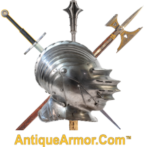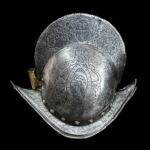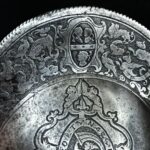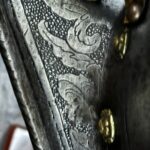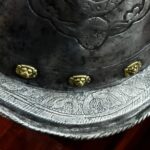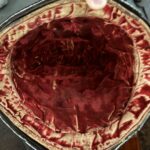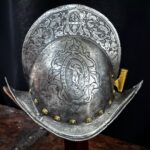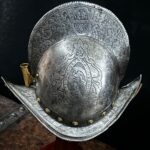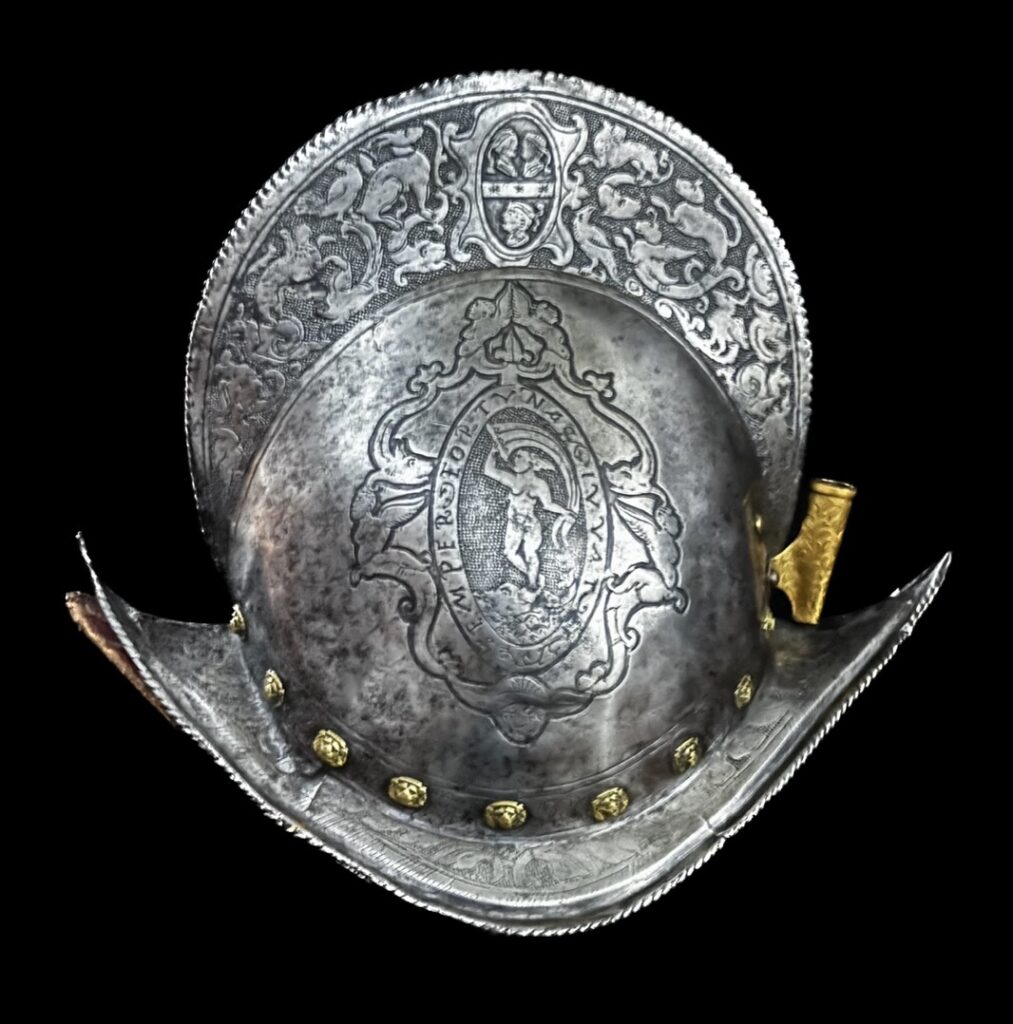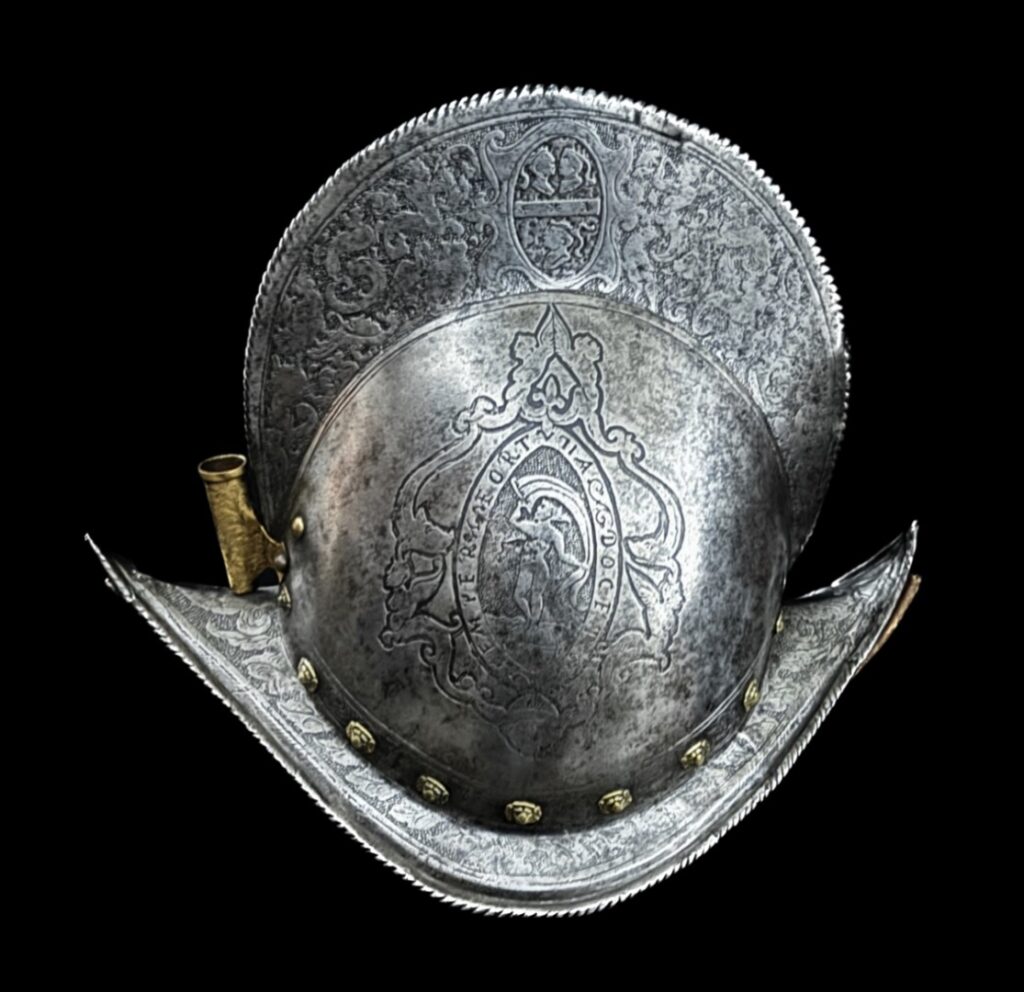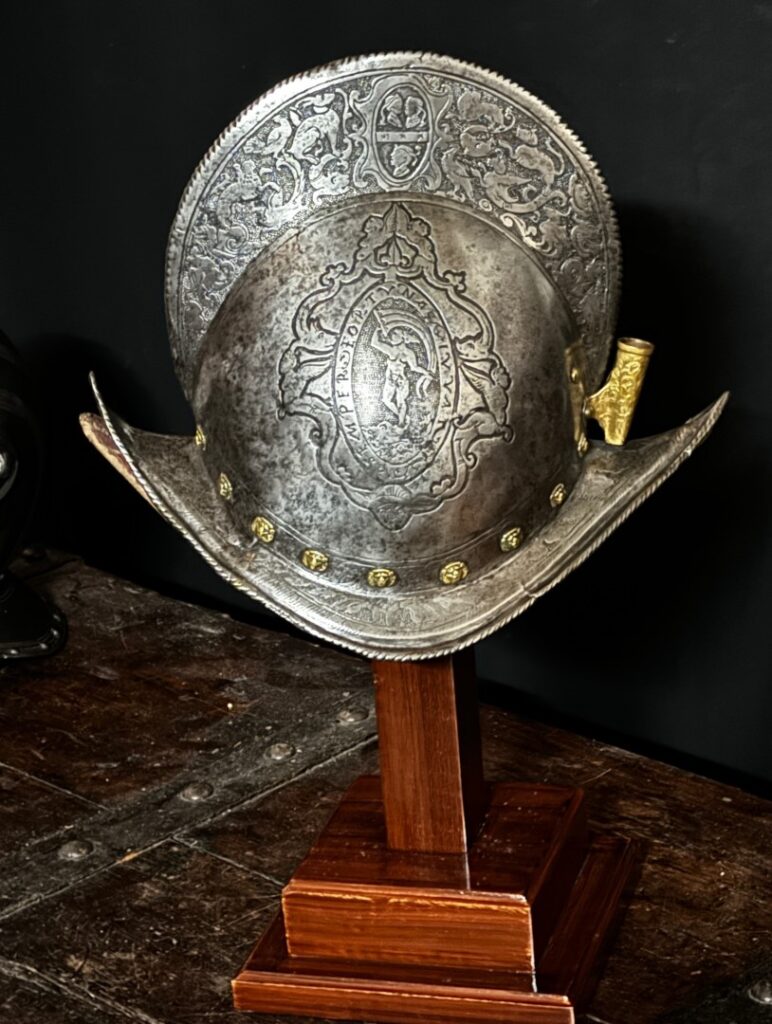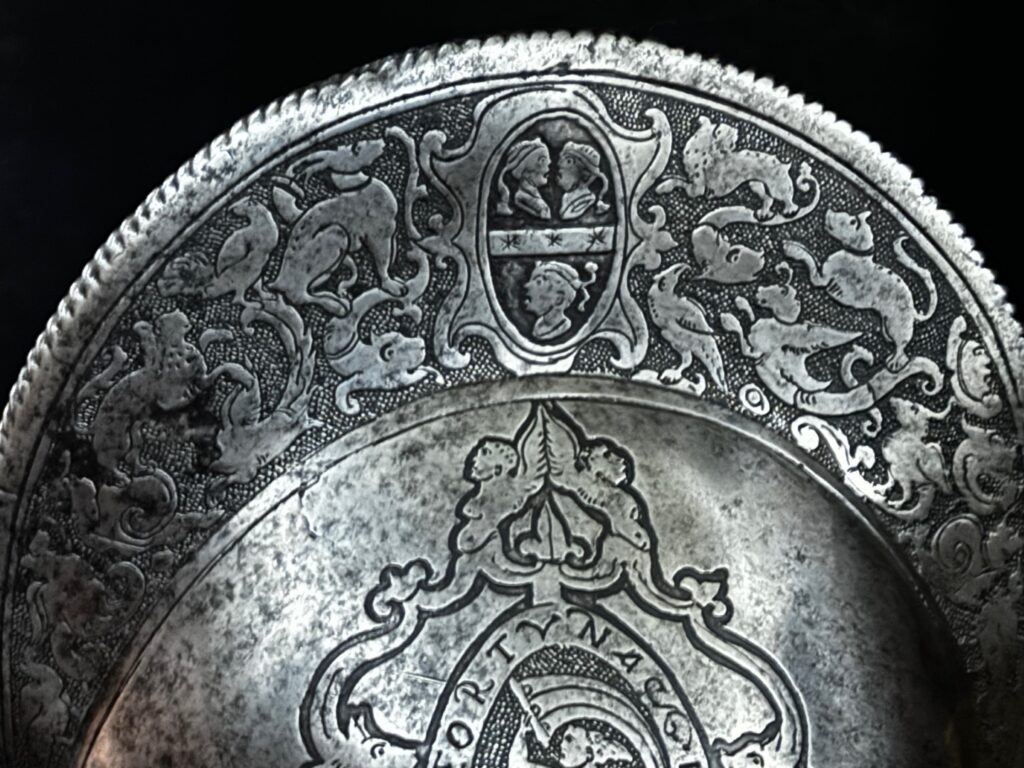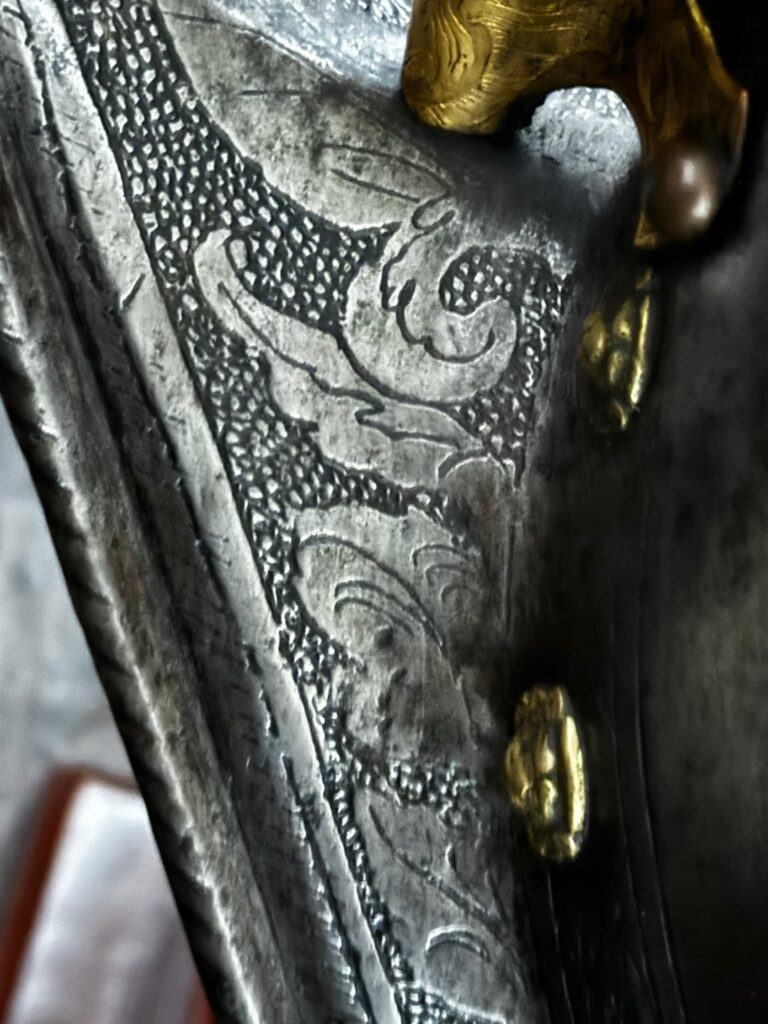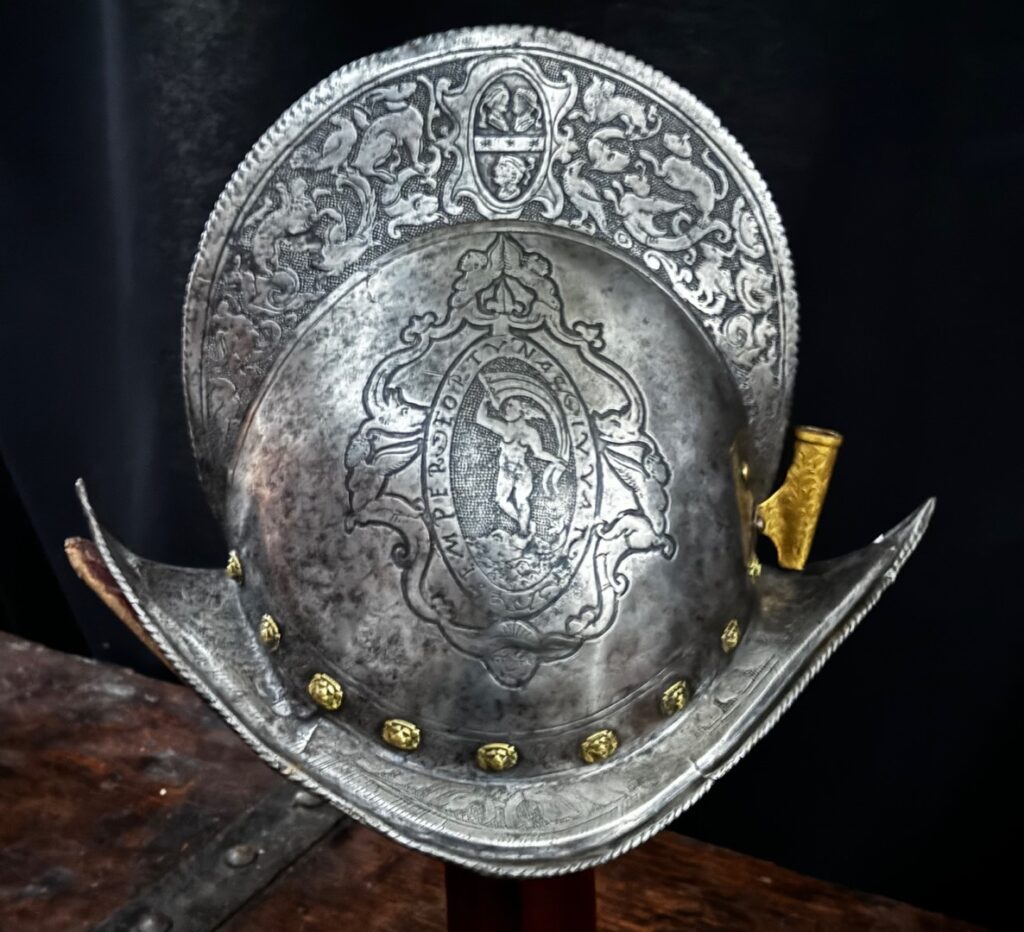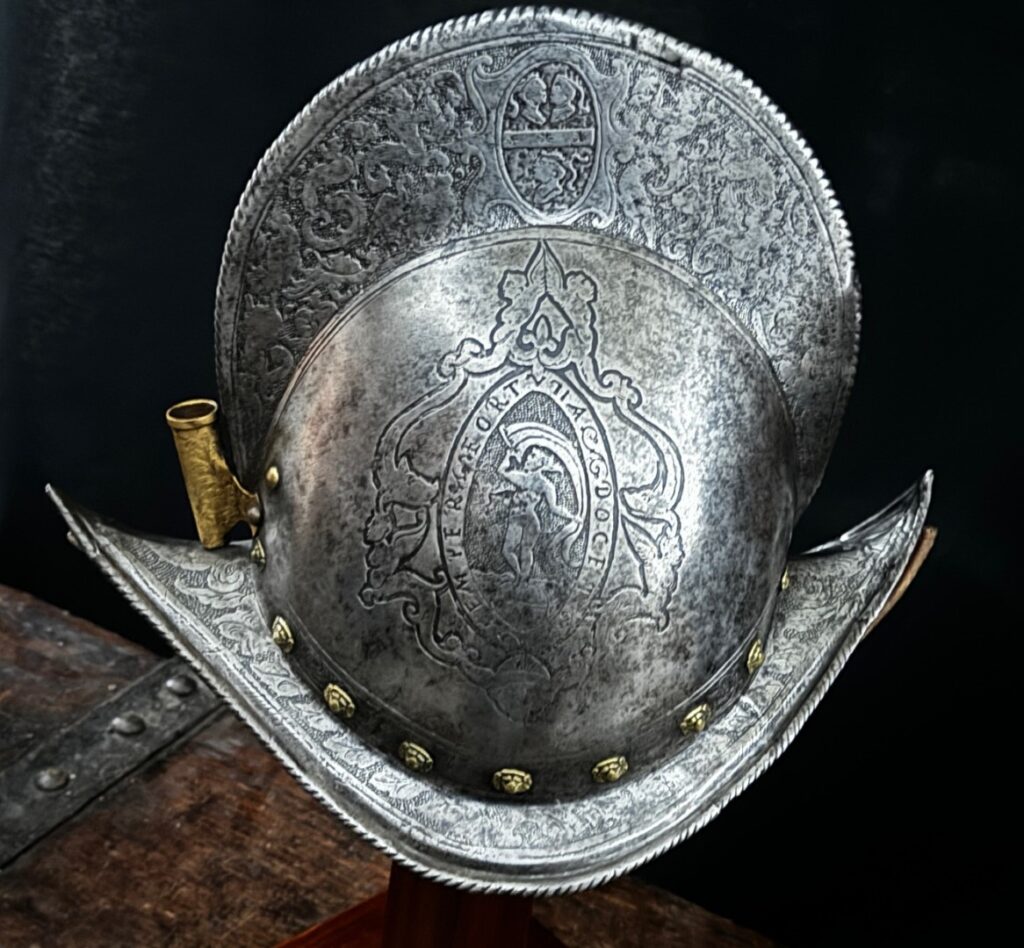1673) MUSEUM QUALITY ETCHED ITALIAN COMB MORION CIRCA 1570: Almost certainly made in Milan.
Discussion: The comb morion was popular in Western Europe from 1540 to 1620. The Italians generally preferred the comb morion and Spanish morion (see page 159 in my book). Conversely, the Germans preferred the burgonet (see page 162). Needless to say, the comb morion shape changed to adjust to the changes in warfare, military tactics, offensive arms, and fashion. The morion was used by man-at-arms, palace guards, city guards, merchants, and explorers. The morion was the Renaissance successor to the Medieval kettle hat. The morion was initially used in Western Continental Europe, mainly Iberia (Spain), Burgundy (France), and Flanders (Belgium). The primary advantage of the morion was visibility. Therefore, the largest proponents of the morion were archers and musketeers. The morion made aiming much easier by increasing the shooter‚ vision without impairment and by increasing peripheral vision. During the inventory of the Saxon Armory in Dresden in 1606, over 60 years after the introduction of the morion, the morion was referred to as the Spanish Shooting Helmet (Spanifle Schutzen Haube). The morion evolved as early as 1540 from the Gothic Kettle/War Hat.
From the third quarter of the 16th century, the comb morion was commonly provided as part of the corslet in Germany. A corslet (see page 197 in my book) is a type of half-armor widely worn by German infantrymen throughout Southern and Western Europe. In Germany, however, the usual equipment for the infantryman of that time was a knee-length knechtisches harness furnished with a burgonet (see pages 173 and 211in my book). The morion was rarely made for military purposes in Germany before the end of the 16th century.
Pisan etching was produced circa 1550. During this period, Italy replaced its practice of a hatched-lines background with the German practice of stippling (drawing or engraving using small dots) the background of bands decorated with trophies, foliage, and grotesque figures. Pisan etching is found on Italian armor of good but not exceptional quality.
The first and oldest method of etching involves covering the entire metal piece being etched with a protective coat, such as wax (combined with pitch and oil) called the ground or paint called a mask. After drying, the artist used the protective coating as a canvas that he then scratched with an etching needle to create his design. The decoration is next treated with a corrosive mineral acid. This mineral acid eats away at the exposed area unprotected by the ground. This process creates the etched decoration onto the metal in relief. When the ground is removed, the etched decoration can be blackened to create contrast.
Description: Superb condition. Made with one-piece construction with roping at the comb and edges of the brim, with masterful etching throughout, surrounded by blackened ground including classical warriors, bands with trophies, foliage, and grotesque figures at the bottom of the skull. The comb throughout is filled with trumpeting angels with scrolling foliage. The morion has a wide brim decorated with foilage on the lower edge, with lining rivets, washers and rossets, and original lining. Almost certainly made in Milan.
Conclusion: Strike while the iron is hot. A comb morion this elegant should sell quickly. Etched morions of this quality are becoming more and more difficult to find. It is priced at a lot less than you think at under $17K. Act now so you won’t be disappointed!!!*
